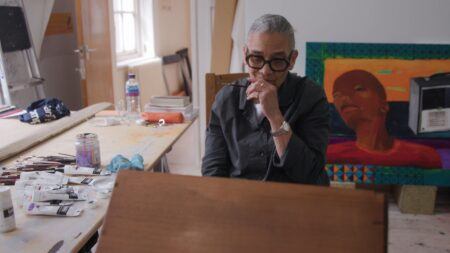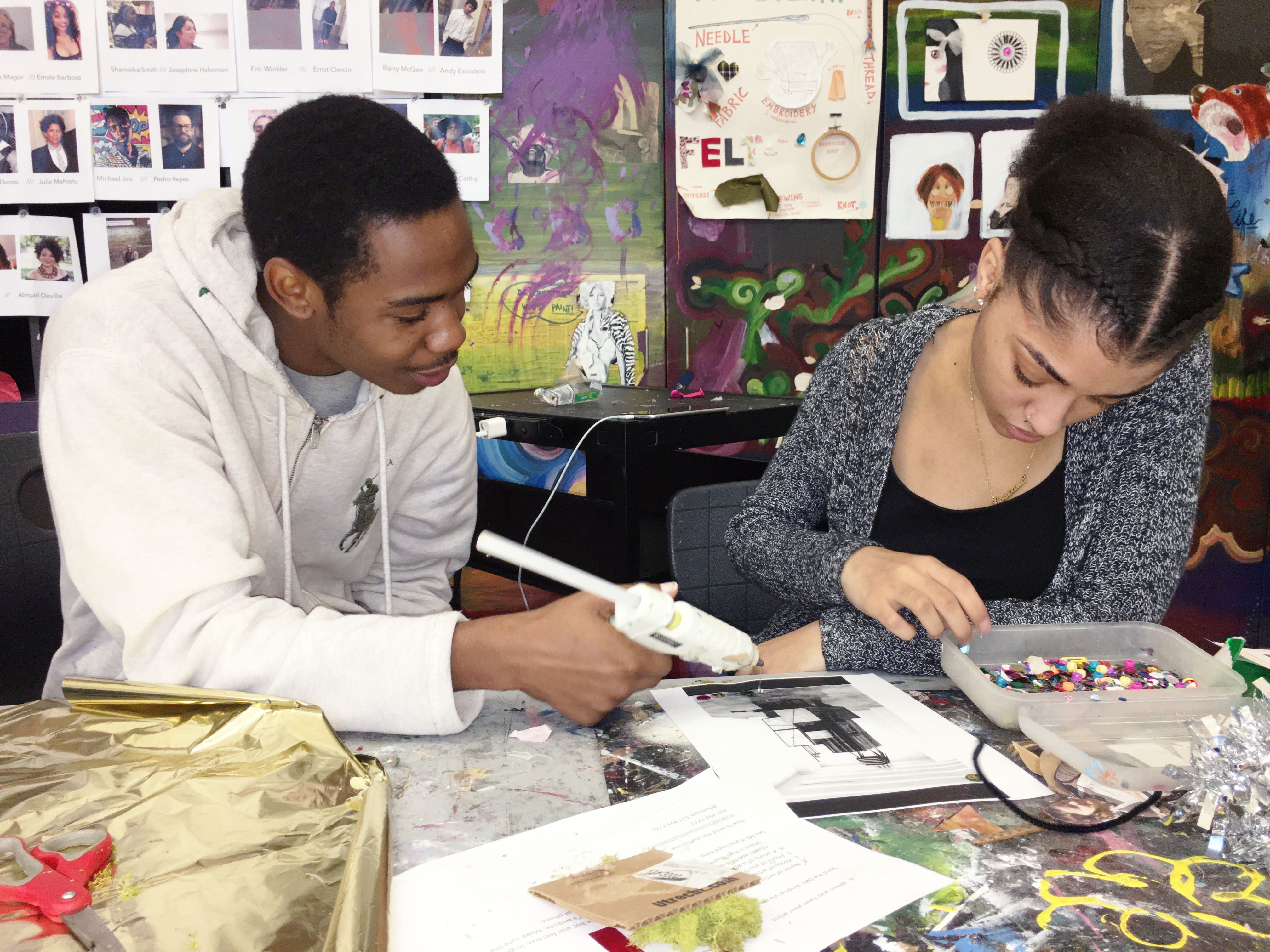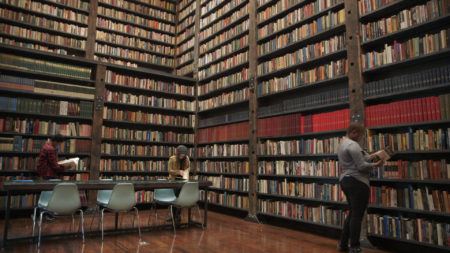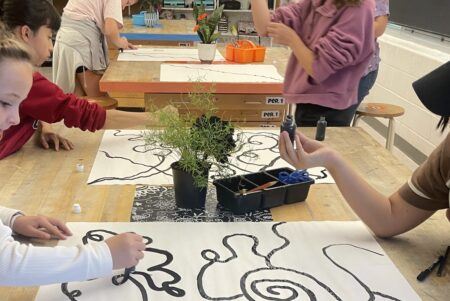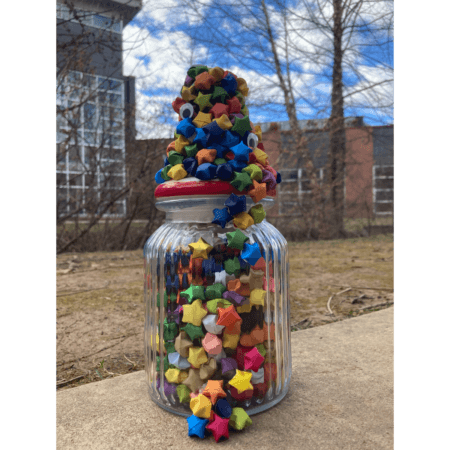Teaching with Contemporary Art
Teaching as a Collaborator
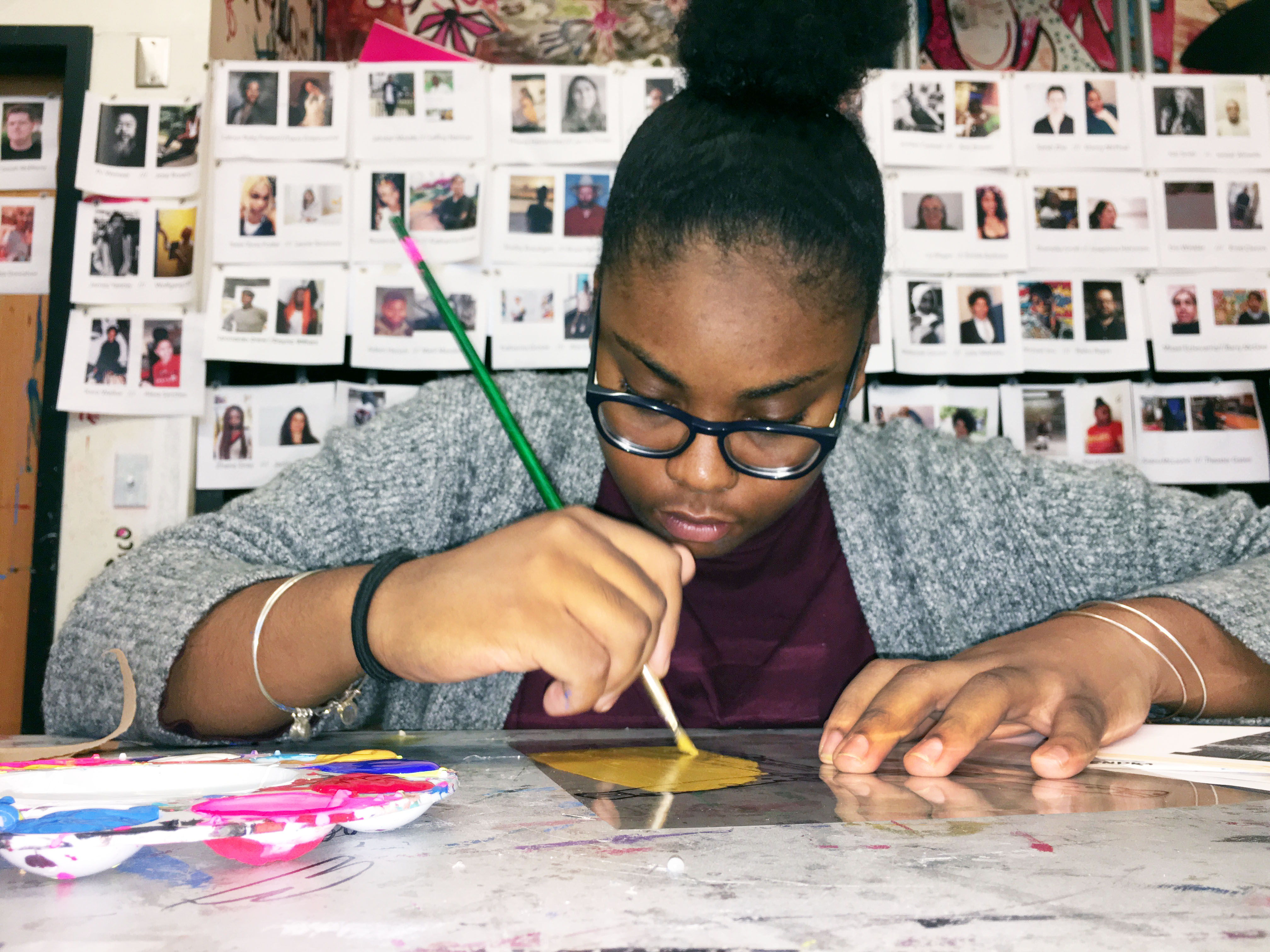
Kendra, chose Marc Bradford as her “artist partner” and is seen here experimenting and using his painting as a starting point.
Artists learn from each other. This idea is what unites my teaching practice, my art practice, and the world of contemporary art. In establishing the culture of my classroom, my goal is to create a space for dialogue, one that doesn’t require words but rather creates an awareness of interconnectedness and interdependence. At the same time, being an artist requires one to establish a personal practice, a unique style, an independent vision. My goal is to provide my students with the possibility to engage with the idea of being part of the world community of artists while exploring their own selves in genuine and personal ways.
Students often find connections that I would have never anticipated
In the context of my students’ art experiences, I consider myself a collaborator and guide rather than a figure of power and authority. My greatest asset, apart from my art practice, is an ongoing connection to the contemporary art world through museums, galleries, and my Art21 Educators community. Through the Art21 documentaries, I can get a well-contextualized glimpse into the minds of contemporary artists and start to mentally engage with their processes. As my student artists practice their creativity in the art room, I can make connections between their works and those of the contemporary art world. I can see the evolution of their thoughts and ideas within the context of works by more experienced artists.

Ernst picked Eric Winkler as his artist partner. As he was working on his experiment he started to create architectural forms on piece of mylar with some imagery derived from Winkler’s work. “Does your work relate to your artist partner?” I asked him. “yes!” he said; Winkler describes his process as starting out to one thing and then letting it organically go in a different direction. This is exactly what happened to my piece: I started out just playing with the available materials and then it acquired structure that I wasn’t able to envision before I started”.
To bring the work of contemporary artists directly into my students’ experience, I developed an assignment in which my students “partner” with an Art21 artist and “collaborate” on the creation of an artwork. My students choose the artists they want to work with by looking through the artist profiles on the Art21 website, reading a bit about the ones who appeal to them, watching some of the videos, and taking notes. Eventually each student finds an artist with whom they feel a connection, and that artist becomes their partner.
It is important that the students themselves decide which artists to partner with. Each student can choose an artist based on race, gender, age, location, artistic style, personal style, or any other characteristics that make people significant, interesting, or appealing. If I, as the teacher, pick an artist to share with my students based on one or more of these characteristics, then I may be disregarding a number of others that might be of extreme importance to my students. If I decide that the factor of age or race is more important than gender or artistic medium, for example, I am making assumptions and unilateral decisions about what should be most important for my students, which can diminish their personal and artistic voices. If I present an artist to the class based on something I consider important, I make sure that my students don’t accept my opinion simply because I am in a position of authority.
After my students choose their artists, they conduct some basic research on their lives and experiences, watch the Art21 videos, follow the artists on social media, if possible, and start a virtual and one-sided but ongoing conversation with that artist through their artwork. Students are not allowed to copy the styles of the artists they chose; that would defeat the whole idea of the partnership. The purpose of the partnership is to zero in on these questions: What is important to you? and How do you explore this as an artist?
Students often find connections that I would have never anticipated, revealing things about my students that I had no other way to learn. Last year, a student named Melody chose Minerva Cuevas as her artist partner. In her statement, she wrote:
From Art21, I chose Minerva Cuevas as my inspirational artist. She was born in Mexico, where she continues to make her art today. I chose her not only because she is a conceptual artist who can relate to me on the basis of being Hispanic, but also because she believes in creating art with purpose and meaning. I found her painting Del Montte—Bananeras fascinating because it was a part of a campaign connected to Guatemala’s regional exploitation of natural resources. I can relate to this piece of art not only because I am half Guatemalan but also because Minerva and I are able to see problems in today’s world and communicate with others through our craft. My Art21 artist and I have a few differences in style when communicating through our art: she uses labels and logos to call out fraud while I attempt to make beautiful paintings with hidden meanings.
– Melody
For her final project of the year, Melody worked on an intricate figure painting. Her piece looked very different from the work done by Cuervas, and it reflected Melody’s experience with a wide range of traditional, conceptual, experimental, and technical assignments she had completed while she was a student in my classroom. The opportunity to establish her practice while engaging in a conceptual dialogue with a professional artist allowed Melody to think beyond many clichés and tropes that often constrain young people in their artwork.
